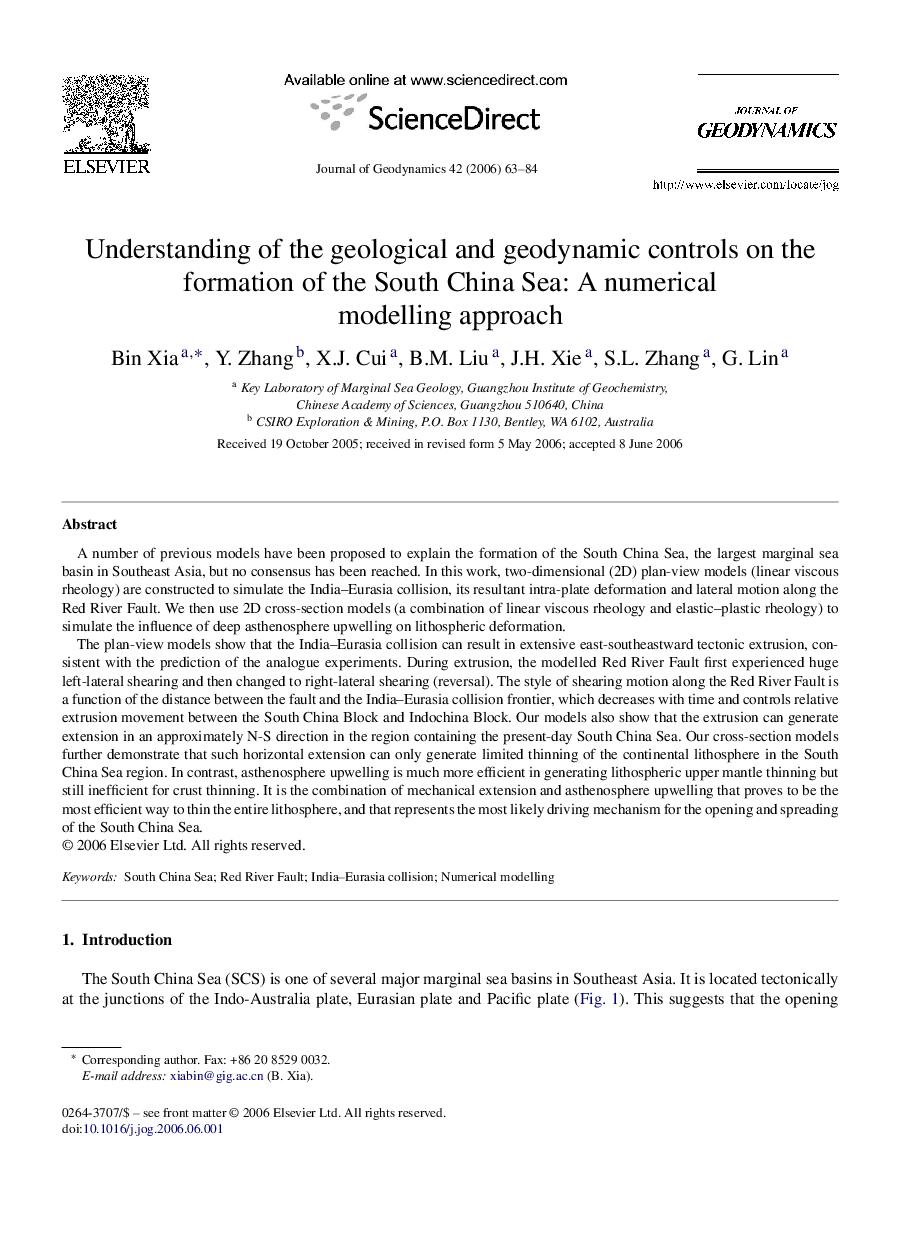| Article ID | Journal | Published Year | Pages | File Type |
|---|---|---|---|---|
| 4688746 | Journal of Geodynamics | 2006 | 22 Pages |
A number of previous models have been proposed to explain the formation of the South China Sea, the largest marginal sea basin in Southeast Asia, but no consensus has been reached. In this work, two-dimensional (2D) plan-view models (linear viscous rheology) are constructed to simulate the India–Eurasia collision, its resultant intra-plate deformation and lateral motion along the Red River Fault. We then use 2D cross-section models (a combination of linear viscous rheology and elastic–plastic rheology) to simulate the influence of deep asthenosphere upwelling on lithospheric deformation.The plan-view models show that the India–Eurasia collision can result in extensive east-southeastward tectonic extrusion, consistent with the prediction of the analogue experiments. During extrusion, the modelled Red River Fault first experienced huge left-lateral shearing and then changed to right-lateral shearing (reversal). The style of shearing motion along the Red River Fault is a function of the distance between the fault and the India–Eurasia collision frontier, which decreases with time and controls relative extrusion movement between the South China Block and Indochina Block. Our models also show that the extrusion can generate extension in an approximately N-S direction in the region containing the present-day South China Sea. Our cross-section models further demonstrate that such horizontal extension can only generate limited thinning of the continental lithosphere in the South China Sea region. In contrast, asthenosphere upwelling is much more efficient in generating lithospheric upper mantle thinning but still inefficient for crust thinning. It is the combination of mechanical extension and asthenosphere upwelling that proves to be the most efficient way to thin the entire lithosphere, and that represents the most likely driving mechanism for the opening and spreading of the South China Sea.
